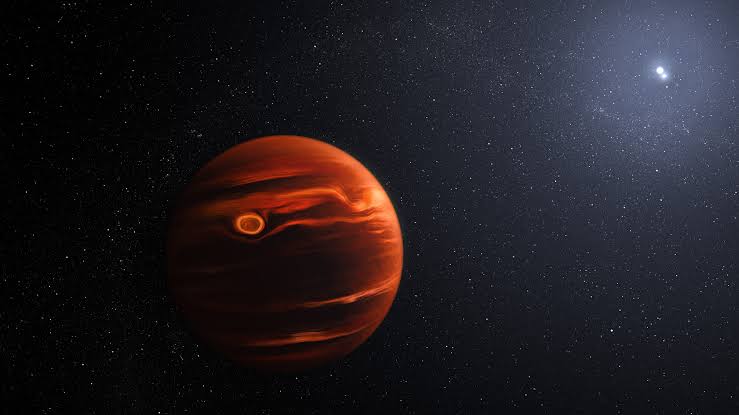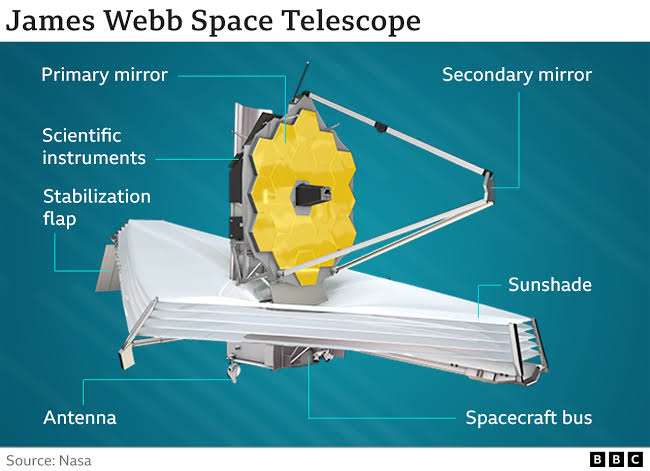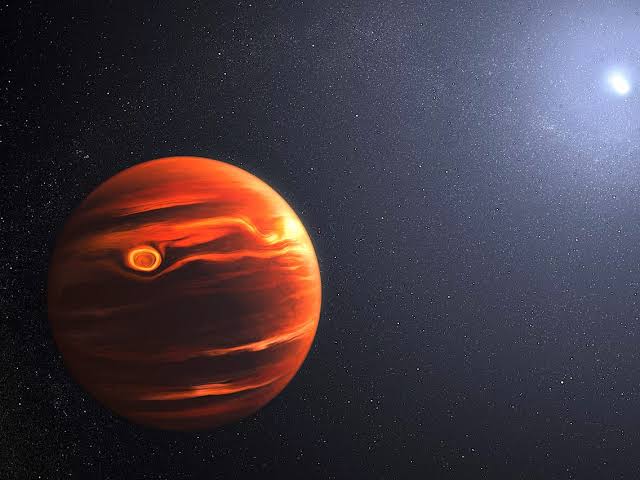The James Webb Space Telescope (JWST) is set to revolutionize our understanding of the early universe and exoplanet exploration. JWST recently discovered a large dust storm on the 40 light-year-distance exoplanet VHS 1256b. This represents a significant advancement in our capacity to investigate and comprehend the atmospheres of far-off planets.
The Discovery:
A significant dust storm has been discovered on an exoplanet outside of our solar system. This is the first instance of this phenomenon on an exoplanet. VHS 1256b is the planet in question, and it’s about 40 light-years away from Earth.
Observations show that silicates make up the majority of the dust particles in the recently reported dust storm on VHS 1256b. These minuscule particles, which combine silicon and oxygen, are the basic constituents of many of the minerals found on rocky planets.
The Exoplanet: VHS 1256b

The exoplanet VHS 1256b, where the recent dust storm was seen, was first seen in 2015 by the UK-built Vista telescope situated in Chile. As a “super Jupiter,” the exoplanet is similar to the gas giant planet of our own solar system but is far bigger, with a mass that is thought to be between 12 and 18 times greater. It orbits a binary star system at a large distance, around four times Pluto’s distance from the Sun.
The Observations Made:
JWST had to use remarkable capabilities to observe and detect these storms on VHS 1256b, which is 40 light years away from the earth. Due to the high temperature of the planet’s atmosphere, this storm differs from a typical dust storm in a desert on Earth by consisting of microscopic silicate grains that resemble smoke particles.
The planet appeared red in earlier observations, which indicated that dust was present in its atmosphere and gave the planet its colour. The JWST investigation provides new insight into the atmospheric dynamics and composition of exoplanets by confirming the existence of silicate particles.
The presence of carbon monoxide and methane in the atmosphere of the planet indicates that it is hot and turbulent, with material being dragged up from the planet’s interior. With the finer grains being discovered higher up in the atmosphere and maybe larger grains being located lower down, there are likely multiple layers of silicate grains present.
JWST and The Methods used:

This is an important step forward in the study of exoplanetary systems with the finding of a dust storm on the exoplanet VHS 1256b. Although silicates have been found in brown dwarfs before, this is the first instance of such particles being found on a planet-sized object.
The finding was made using the Mid-Infrared Instrument (Miri) and Near-Infrared Spectrometer (NirSpec) of the James Webb Space Telescope (JWST), both of which were partially constructed in the UK. The instruments examined the light coming from VHS 1256b to determine its atmospheric makeup rather than taking pictures of the planet.
Scientists were able to monitor the planet’s dynamic atmosphere in unprecedented detail because of JWST’s improved capabilities. Prof. Gillian Wright, the study’s co-principal investigator, expressed optimism that JWST could shed more light on the potential for habitable exoplanets, saying that “the dynamic picture of the atmosphere of VHS 1256b provided by this study is a prime example of the discoveries enabled by using the advanced capabilities of Miri and NirSpec together.”
Related: Post 17 Modes Approval, Webb Will Start Its Instrument Commissioning Phase
Conclusion:
The US, European, and Canadian space agencies worked incredibly well together to create the James Webb Space Telescope. A new era in space exploration began with its successful launch in December 2021, and it is slated to succeed the venerable Hubble Space Telescope as our window to the cosmos. JWST promises to make ground-breaking findings in the study of exoplanetary systems and the universe beyond thanks to its cutting-edge technology and enhanced capabilities. We are eager to find out what it shows.
